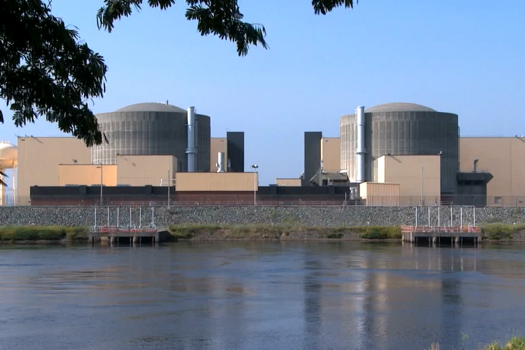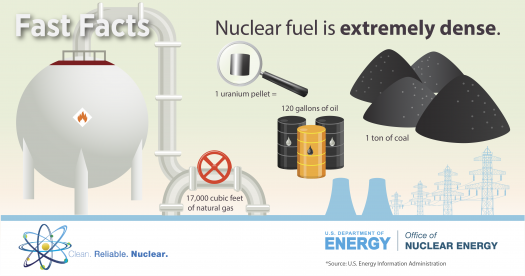3 Reasons Why Nuclear is Clean and Sustainable | Department of Energy
Office of Nuclear Energy
3 Reasons Why Nuclear is Clean and Sustainable
APRIL 30, 2020
Home » 3 Reasons Why Nuclear is Clean and Sustainable
When you hear the words “clean energy,” what comes to mind?
Most people immediately think of solar panels or wind turbines, but how many of you thought of nuclear energy?
Nuclear is often left out of the “clean energy” conversation despite it being the second largest source of low-carbon electricity in the world behind hydropower.
So, just how clean and sustainable is nuclear?
Try these quick facts for starters.
1. Nuclear energy protects air quality

McGuire Nuclear Station located in Mecklenburg County, North Carolina.
Duke Energy
Nuclear is a zero-emission clean energy source.
It generates power through fission, which is the process of splitting uranium atoms to produce energy. The heat released by fission is used to create steam that spins a turbine to generate electricity without the harmful byproducts emitted by fossil fuels.
According to the Nuclear Energy Institute (NEI), the United States avoided more than 476 million metric tons of carbon dioxide emissions in 2019. That’s the equivalent of removing 100 million cars from the road and more than all other clean energy sources combined.
It also keeps the air clean by removing thousands of tons of harmful air pollutants each year that contribute to acid rain, smog, lung cancer and cardiovascular disease.
2. Nuclear energy’s land footprint is small

A 25 megawatt solar power system in DeSoto County, Florida
NREL
Despite producing massive amounts of carbon-free power, nuclear energy produces more electricity on less land than any other clean-air source.
A typical 1,000-megawatt nuclear facility in the United States needs a little more than 1 square mile to operate. NEI says wind farms require 360 times more land area to produce the same amount of electricity and solar photovoltaic plants require 75 times more space.
To put that in perspective, you would need more than 3 million solar panels to produce the same amount of power as a typical commercial reactor or more than 430 wind turbines (capacity factor not included).
See more comparisons here.
3. Nuclear energy produces minimal waste

Graphic by Sarah Harman | U.S. Department of Energy
Nuclear fuel is extremely dense.
It’s about 1 million times greater than that of other traditional energy sources and because of this, the amount of used nuclear fuel is not as big as you might think.
All of the used nuclear fuel produced by the U.S. nuclear energy industry over the last 60 years could fit on a football field at a depth of less than 10 yards!
That waste can also be reprocessed and recycled, although the United States does not currently do this.
However, some advanced reactors designs being developed could operate on used fuel.
The NICE Future Initiative is a global effort under the Clean Energy Ministerial that makes sure nuclear will be considered in developing the advanced clean energy systems of the future.
